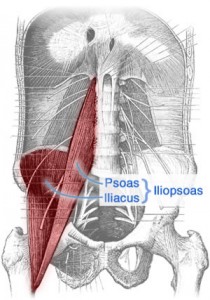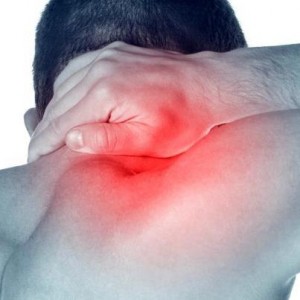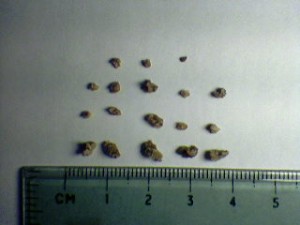It’s no doubt that more of us than ever are spending an excessive amount of time sitting and by now, you’ve heard the frightening stats — to summarize: sitting kills. But before sitting can send you to an early grave, it can cause a whole host of health issues, not the least of which are those that affect your musculoskeletal system.

Low back and leg pain? You Need Iliopsoas release
If you’re finding yourself with a myriad of symptoms from low back and leg pain, numbness or tingling of your leg or toes, or inflammation of the leg and feet you may need an iliopsoas release. Located in the pelvic bowl, (which houses many nerve bundles that can cause problems in the lower extremities) the iliopsoas is often referred to, as if it is a single muscle, when it is actually a blending of two muscles: the psoas major and the iliacus. Your psoas major works together with the iliacus muscle to create a powerful flexor of the thigh at the hip-joint and in number of other actions, forming the iliopsoas.

That Cranky Psoas
In a recent article in Massage Today, they discuss the conflicting evidence of low back pain among people who sit most of the day — its main conclusion? That there are many factors related to sitting and low back pain, but that it is the iliopsoas (psoas) muscle that causes much of the pain in the lower body of a person that sits for too long.
Although it might seem that some of the research on sitting is contradictory, it’s pretty safe to say that movement is always better than prolonged static positions. Part of the reason is the proximity of these nerves, bundled in the low back. This means excessive sitting can cause “potential nerve entrapment and big trouble for anything innervated by these nerves when psoas dysfunction is present (Kirchmair et al 2008).”
The psoas’ proximity to the lumbar plexus and abdominal organs, has also led many others to suggest that the health of the iliopsoas may be essential for proper functioning of “the kidneys, adrenals, digestion and effective metabolism in the reproductive system.”
With a low irritability threshold, the psoas can prove to be quite cranky, causing issues with the slightest provocation but when bombarded with hours of sitting and coupled with stress, the central nervous system may just decide to keep your psoas engaged, limiting the function of gluteal muscles and affecting motor patterning.
Compensation and a Taxed Nervous System
This can all lead to compensation within the body. Compensation, in its simplest terms, is a domino effect of imbalance within the body, as other areas of the body work to “compensate” for an injured or stressed section of the body. In this case, limited function of the glutes would engage the back extensors, hamstrings and quads, creating lower cross syndrome (LCS) or a cycle of muscular imbalance, motor pattern dysfunction, proprioceptive deficits and joint instability, ultimately stressing the nervous system.

Help for your cranky sore ass . . . um, we mean, Psoas
There are many things you can do to help ease the burden on your psoas:
- Standing workstations
- Treadmill desks
- Alternating sitting and standing throughout the day
- Change sitting position frequently, which changes the pressure on the psoas and on your discs
- Frequent breaks throughout the day for stretching and walking
- Targeted stretches for the iliopsoas (like those on this video we found on YouTube)
And, of course, bodywork and massage. We will warn you though, that the work done on a cranky iliopsoas is often painful but incredibly effective at helping to relieve long-standing leg and low back issues. If you want relief and you’re up for the work, call today to schedule a massage to see if we can help you ease the pain of sore ass . . . um, we mean psoas, caused by many hours sitting in front of your computer.



